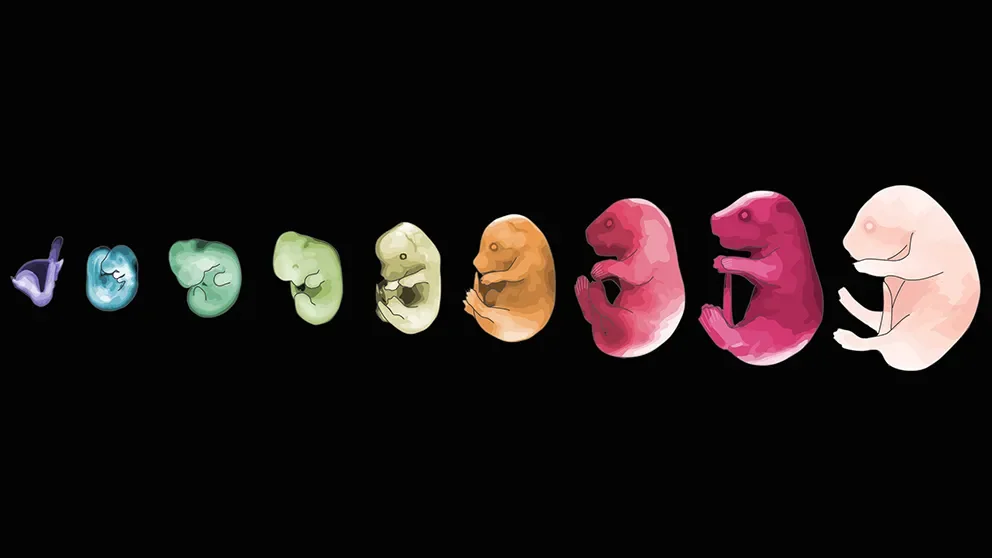A landmark study maps the precise orchestration of prenatal development

(Bar Harbor, Maine – Feb. 28, 2024) – In a landmark study, researchers at University of Washington and The Jackson Laboratory have characterized, in exacting detail, the rapid series of events that transform a single fertilized cell into a living, complex being. The work, reported this month in Nature, not only has enabled the team to explore which genes drive the differentiation of hundreds of cell types, but also shows, for the first time, that there are very rapid changes in genetic activity within the hour immediately following birth, underscoring the speed with which newborns must adapt.
“The scale of the single cell data set is massive,” says JAX Research ScientistIan Welsh, Ph.D., who, along with JAX Associate Professor Stephen Murray, Ph.D., possesses key expertise in embryo morphogenesis, the generation of embryonic structures such as limbs and organs. Together they designed the strategy to collect and precisely organize the samples by developmental stage.
In mice, the whole process from one cell to more than 500 million takes less than three weeks. A team, led by Jay Shendure, Ph.D., of the University of Washington, characterized the process in exacting detail, profiling nuclei in 12.4 million cells from 83 embryos that span prenatal development from embryonic day eight to birth. In each of these nuclei, Shendure and his team sequenced messenger RNA to identify cells by which genes are being expressed and how active they are, ultimately constructing a tree of cell-type relationships from fertilized egg to birth.
Imagine trying to reconstruct a feature length film by gluing together a pile of each of the individual frames. The more accurately that you can place those frames in time, the more accurately you will reconstruct the movie.
Mouse embryonic development has typically been studied in 24-hour increments after an egg is fertilized. An ambitious goal of this study was to increase the resolution of the analysis by staging embryos at two- to six- hour intervals. However, complicating the task is that gestational time is not strictly correlated with developmental stage, in that different embryos reach developmental milestones at different times, even within the same litter.
“Our contribution to the project is the rigor of sample collection and, importantly, exact staging of the samples with respect to each other in ‘absolute’ developmental time,” says Welsh. “Imagine trying to reconstruct a feature length film by gluing together a pile of each of the individual frames. The more accurately that you can place those frames in time, the more accurately you will reconstruct the movie.”
Over the course of development, the formation of new cell types mostly occurred gradually, with cells well mixed across adjacent time points. A surprising exception was the transition from late-stage fetus to newborn. Certain cell types—kidney, brown fat, and others—showed very rapid changes in genetic activity within the hour immediately following birth. The findings underscore the magnitude of the change from placental to extrauterine life.
As a foundation, the findings point the way to future studies. For example, better understanding of the post-birth adaptive functions—and the mechanisms underlying their rapid use—may help explain the differences in long-term physiology and health outcomes between human babies born via C-section versus vaginal delivery. And extending the framework could, in theory, yield a single-cell-time-lapse of the entire mammalian lifespan, from conception to death.
About The Jackson Laboratory
The Jackson Laboratory is an independent, nonprofit biomedical research institution with a National Cancer Institute-designated Cancer Center and more than 3,000 employees in locations across the United States, Japan and China. Its mission is to discover precise genomic solutions for disease and to empower the global biomedical community in the shared quest to improve human health. For more information, please visitwww.jax.org.
JAX media contact: Cara McDonough, [email protected], 919-696-3854

